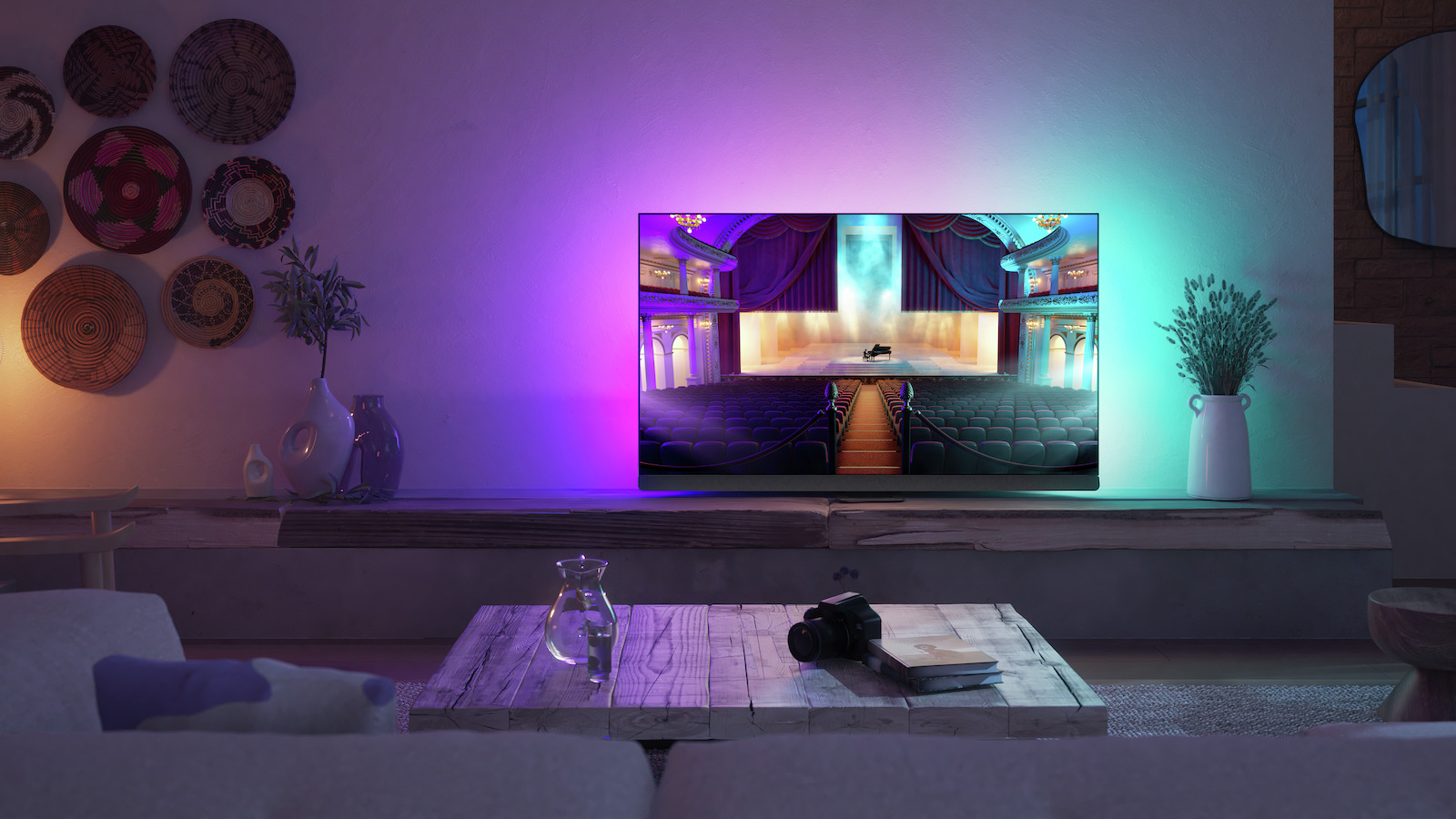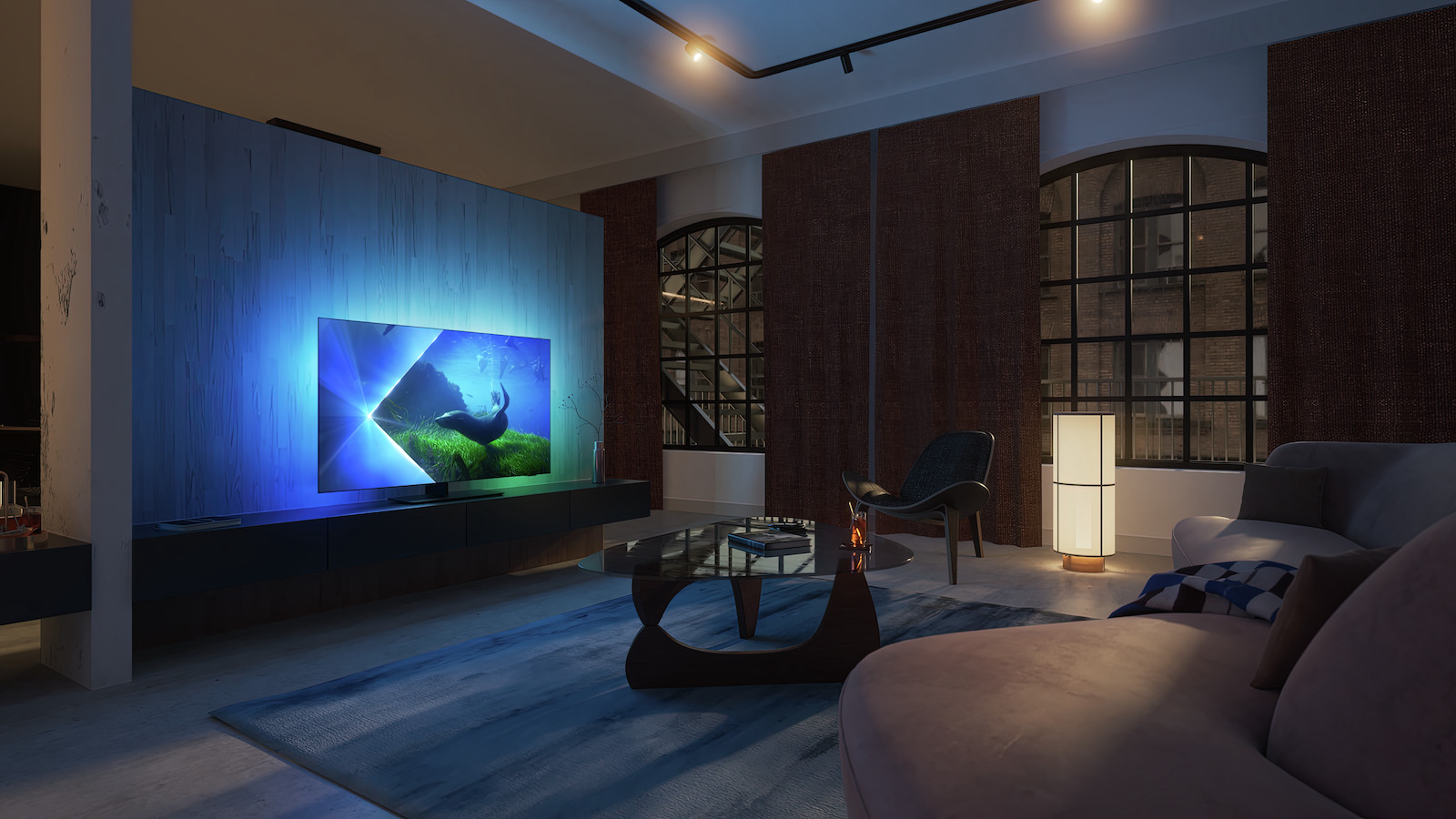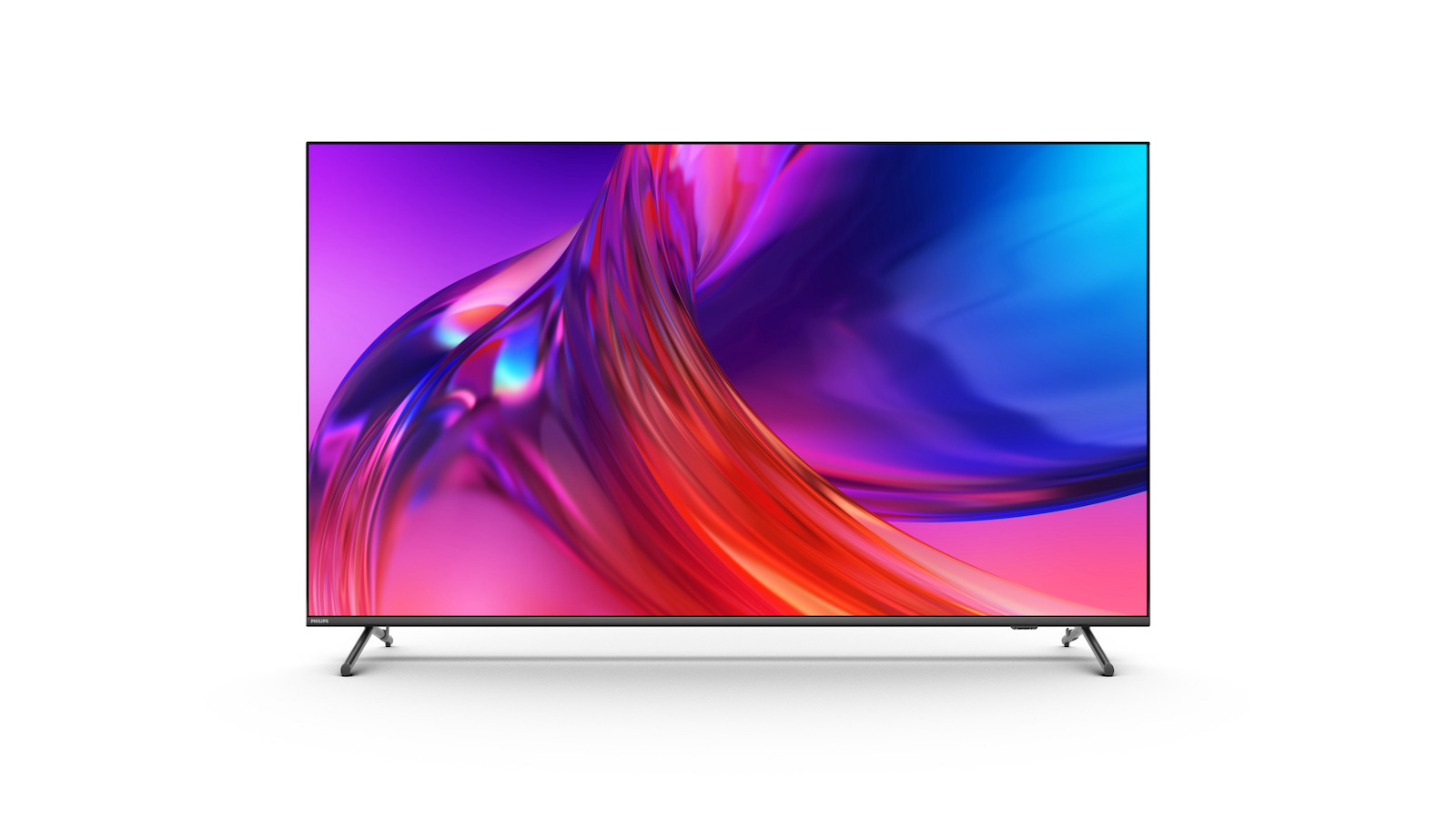Philips announces 2023 TV range with 2100-nit OLED908 model
Also includes Philips' first 42-inch OLED TV

Philips has just taken the wraps off a number of its 2023 TVs, including a flagship OLED908 model that features MLA technology and can apparently hit a peak brightness of 2100 nits.
While some manufacturers, most notoriously LG Electronics, like to keep to themselves the specifications of their new models and info on the raw materials used, Philips is being refreshingly open. It has been confirmed that the OLED908 uses the latest META panel, which uses a Micro Lens Array to boost brightness without the need for the OLED materials themselves to be driven any harder – crucial for ensuring that the TV has a long life.
Brightness is further boosted by a heatsink. This allows the set to be driven harder (i.e. brighter) without adding stress to the OLED materials. It's the combination of these features that give the OLED908 its claimed 2100-nit brightness figure.
It's worth noting here that we anticipate this figure only being achievable in the set's most aggressive and least natural picture presets, and even then it could be for a very short time and in a small area. Still, the figure sounds very impressive indeed, and we're looking forward to interrogating Philips about it and seeing it for ourselves in an imminent hands-on workshop.
It's not just the OLED908's picture that looks set to impress: it also features a 3.1, 80W sound system designed by Bowers & Wilkins. Like the OLED907 before it, this features a purely front-firing speaker array that's mounted directly below the screen so that it essentially looks like a particularly well-integrated soundbar. That makes it different to the OLED937, which features a bigger speaker array with upward-firing drivers and is, surprisingly, not going to be replaced this year.
Philips' top TVs were already well-specced for next-gen gaming, but the OLED908 (and some other models, which we'll get to shortly) take things a step further by adding support for Dolby Vision gaming at 4K/120Hz. Standard 4K/120Hz is also of course supported, plus VRR (from 40Hz right up to 120Hz) in the standard, FreeSync Premium and G-Sync formats. There's no mention in the press release of an increase in the number of HDMI 2.1 sockets, so we're assuming that's staying at just two. That would be a shame if true, particularly if one of them is also designated the eARC port. We've asked for clarification and will update this page as soon as we've heard back. We do know that each of the HDMI 2.1 sockets that the set does have is specced to the full-fat 48Gbps bandwidth.
The set is powered by a new 7th Gen P5 AI processor and features an updated and apparently more intuitive Philips user interface that will work in tandem with the Google TV operating system.
The latest hi-fi, home cinema and tech news, reviews, buying advice and deals, direct to your inbox.
Finally, the OLED908 features the 'Next Gen' version of Philips' Ambilight system that was debuted last year. This uses more independently controlled LEDs around the set for more accurate expansion of the on-screen action in the form of coloured light around the screen.
OLED808 core model with 42-inch option

Much like LG's C models, Philips' 800-series has always been the company's best from a performance and features-per-pound perspective, so news of the new OLED808 model will be met with much excitement.
Inevitably, it features neither MLA technology nor a heatsink, but it does use an OLED EX panel and will, according to Philips, hit a peak brightness figure of 1000 nits. That would put it in LG G2 territory and make it brighter than the C2 and therefore almost certainly the seemingly lightly upgraded new C3 model.
The biggest news for the OLED808 range is that it now includes a 42-inch model – Philips' first-ever 42-inch OLED TV. This 42-inch model and the 48-inch version will go slightly less bright than the 1000 nits of the 55-inch, 65-inch and 77-inch models, but that's the norm for OLEDs of this size – apparently, the extreme closeness of the OLED materials in these smaller panels means they can't be driven as hard.
The OLED808 doesn't feature a B&W sound system. Instead, you get a 70W Philips-tuned speaker system on all models except the 42-inch version, which has 50W of power.
Otherwise, OLED808's specs are very similar to those of the OLED908, including the upgraded gaming features, Next Gen Ambilight, 7th Gen P5 AI processor, a new interface and Google TV OS.
New 'The Xtra' Mini LED model sits between the OLEDs and the new 'The One'

Despite last year's model faring rather poorly in our review, Philips says its 'The One' TVs in its range that hit the sweet spot for affordable performance and features and apparently sell very well.
Confusingly, this year, 'The One' isn't just one model, but two. That's right, the 'The One' branding, which has always seemed a little poorly conceived, now looks odder than ever.
These new models are the LCD-based PUS8808 and PUS8508, with the only obvious differences between them being that the former features a 120Hz panel while the latter has a native refresh rate of 60Hz, and that they're available in different sizes. The 8508 comes in 43 inches, 50 inches, 55 inches and 65 inches. The 8808 will be available in all of those as well as 75 inches and 85 inches.
All models feature standard (as opposed to Next Gen), three-sided Ambilight, a 7th Gen P5 processor (note the lack of 'AI' in the name) and the Google TV operating system.
Interestingly, Philips is also introducing a model called 'The Xtra', which sits above 'The One' but below the company's OLED TVs. This is a Mini LED model that will be available in 55- and 65-inch sizes when it launches in the second half of 2023.
Philips is promising a peak brightness of 1000 nits from 'The Xtra' (aka the PUS9308), and a refresh rate of 120Hz. More on this model as we get it.
MORE:
Check out our review of the Philips OLED807, one of the best TVs you can currently buy
Here's our review of the Philips OLED907, which the new OLED908 replaces
And check out our round-up of the best OLED TVs you can buy right now
Tom Parsons has been writing about TV, AV and hi-fi products (not to mention plenty of other 'gadgets' and even cars) for over 15 years. He began his career as What Hi-Fi?'s Staff Writer and is now the TV and AV Editor. In between, he worked as Reviews Editor and then Deputy Editor at Stuff, and over the years has had his work featured in publications such as T3, The Telegraph and Louder. He's also appeared on BBC News, BBC World Service, BBC Radio 4 and Sky Swipe. In his spare time Tom is a runner and gamer.

